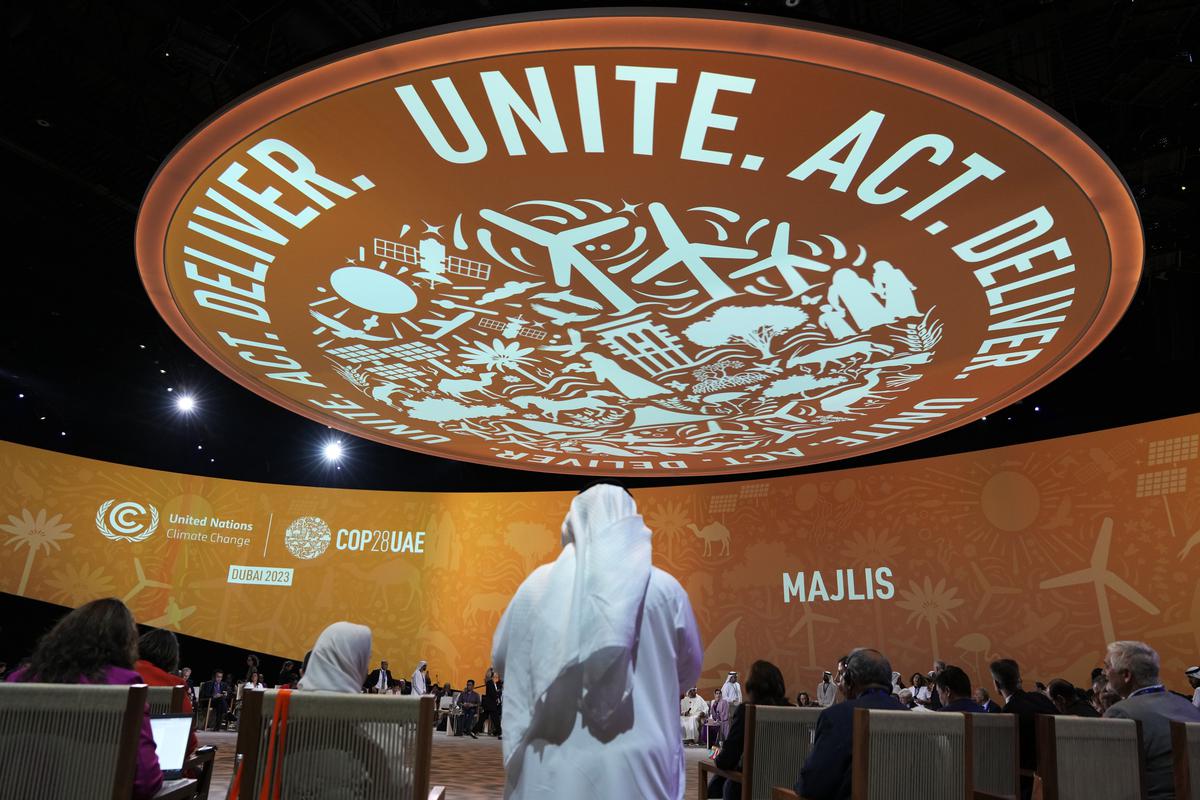Live Classes

The 28th Conference of Parties (COP-28) in Dubai has been described by some as being a mixed bag. Even though it could not come up with a profound statement of ending fossil fuels, at least a discussion was triggered. A few ambitious delegates described it as the “beginning of the end of an era of fossil fuels”. This was an important COP owing to the Global Stock Taking (GST) over the Paris climate deals of keeping global temperatures below 1.5 degree Celsius and reducing greenhouse gas (GHG) emissions. Likewise, the Loss and Damage Fund was also cleared. The focus was therefore, on both mitigation and adaptation strategies.
What was discussed about cities?
When the United Nations Framework Convention on Climate Change (UNFCC) initiated the COP in 1995, 44% of people lived in cities. Currently, 55% of the global population is urban and this is expected to reach 68% by 2050. The urban world today consumes nearly 75% of primary energy and is responsible for roughly 70% of CO2 (76% of total GHG) emissions. Hence, the desired results of the Paris commitments are not possible without addressing urban issues.
At this year’s COP, there was a special day dedicated to a ministerial meeting on urbanisation and climate change. This meeting convened Ministers of housing, urban development, environment finance, and other portfolios; local and regional leaders, financial institutions, non-government organisations; and other stakeholders. Such moves forced some of the city representatives and Civil Society Organisations (CSOs), to raise their voice and emphasise on the principle — “nothing for us without us”. This lays down the fundamental point of redefining the financial and governance architecture of COPs. City representatives have been arguing for multi-level green deal governance and for revising the governance and regulation of energy and climate action. Likewise, some European city groups have been staunchly advocating for direct actions in cities.
Rafal Trzaskowski, ENVE chair and Mayor of Warsaw, leading member of the mayor’s delegation for COP-28, argued for formally recognising the role of subnational governments in global climate change negotiations, accelerating and scaling up climate action by working across all levels of governance and sectors, and providing direct financing and technical assistance to cities and regions. This will require an ‘out of the box’ imagination as it would mean transgressing the authorities of federal governments. Nevertheless, the moot point is that cities and regions are key actors in driving climate ambition forward and in creating green jobs, reducing air pollution, and improving human health and well-being. The efforts of city governments should be formally recognised in COP decision documents.
What can be done in the Global South?
The cities of the Global South are far more vulnerable than their western counterparts. The city leaders are hardly empowered, the major employment is in the informal sector, adaptation is key as most cities are vulnerable to climate induced disasters and the pent up drive to attract investments to cities has further widened the gap between the rich and the poor. In most countries, and in India particularly, 40% of the urban population live in slums. Pollution is a major contributor in reducing life expectancies and social and economic inequities are quite inherent in their systems. So, to ensure fair participation in climate action plans and to claim loss and damage compensation, etc., there has to be a radical shift in the processes governing the cities. One of the ways of achieving progress, even if that is too little, can be through creating a climate atlas of these cities, mapping them and identifying hotspots. Here, a major support system from existing financial architecture including the outcome of COPs is required.
During the preparation of Nationally Determined Contributions (NDCs) and National Adaptation Plans, cities find themselves excluded from the process of climate action plans. There is hardly any representation of city leaders and civil society groups in this process. Hence, reclaiming space at COPs and during the run up to them in respective countries should happen parallelly.
This does not discount the fact that some cities like Chennai are spearheading their climate action plan and have decided to meet their zero emission targets by 2050, even before the Indian national government’s stipulated time period of 2070. Though this may sound too ambitious, it qualifies the point that cities are at the forefront in reclaiming spaces in meeting climate action plans and hence should get a fair share in planning both mitigation and adaptive strategies. COP-28 may have been a damp squib as many say, however, it has brought to fore the crucial question of acknowledging the interconnections, interdependencies and interconnectedness of climate action, social justice and the role of the urban world.
Download pdf to Read More